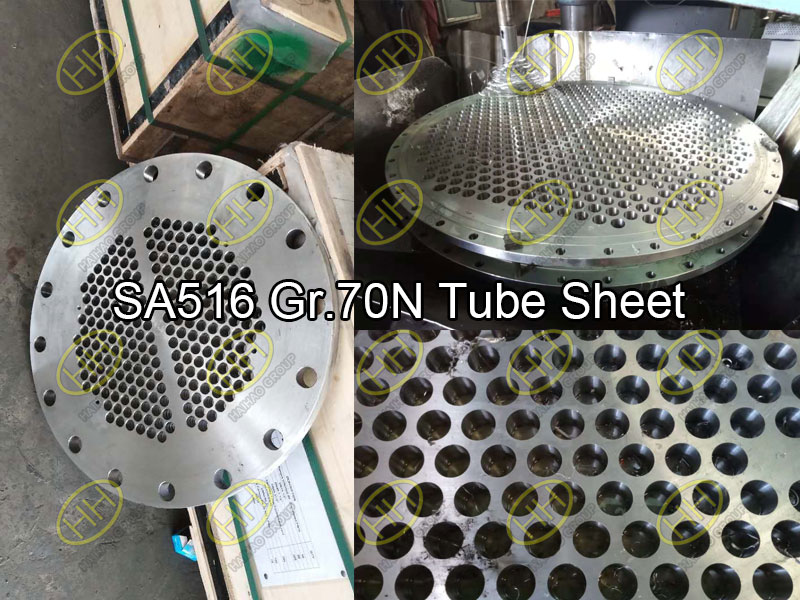What are the best materials for a heat exchanger?
You might think heat exchangers would always need to be made of metals, which quickly absorb and conduct heat—and many of them are. But heat exchangers can also be made of ceramics, composites (based on either metals or ceramics), and even plastics (polymers).

SA516 Gr 70N tube sheet for heat exchangers finished in Haihao Group
All these materials have their advantages. Ceramics are a particularly good choice for the kind of high-temperature applications (over 1000°C or 2000°F) that would melt metals like copper, iron, and steel, though they’re also popular for use with corrosive and abrasive fluids at either high or low temperatures. Plastics generally weigh and cost less than metals, resist corrosion and fouling, and can be engineered to have good thermal conductivity, though they tend to be mechanically weak and may degrade over time. Although not generally suitable for high-temperature applications, plastic exchangers could be a good choice for something like a swimming pool or shower, operating at everyday, room-temperatures. Composite heat exchangers combine the best features of their parent materials—say, the high thermal conductivity of a metal with the reduced weight and better corrosion resistance of a plastic.
In the future, it’s distinctly possible we’ll be using even more interesting materials in heat sinks. Carbon nanotubes, for example (thin hexagonal sheets of carbon wrapped around to make “pipes”), have amazing heat conducting properties and are already being used in heat sinks (heat removal devices used mainly in electronics).
